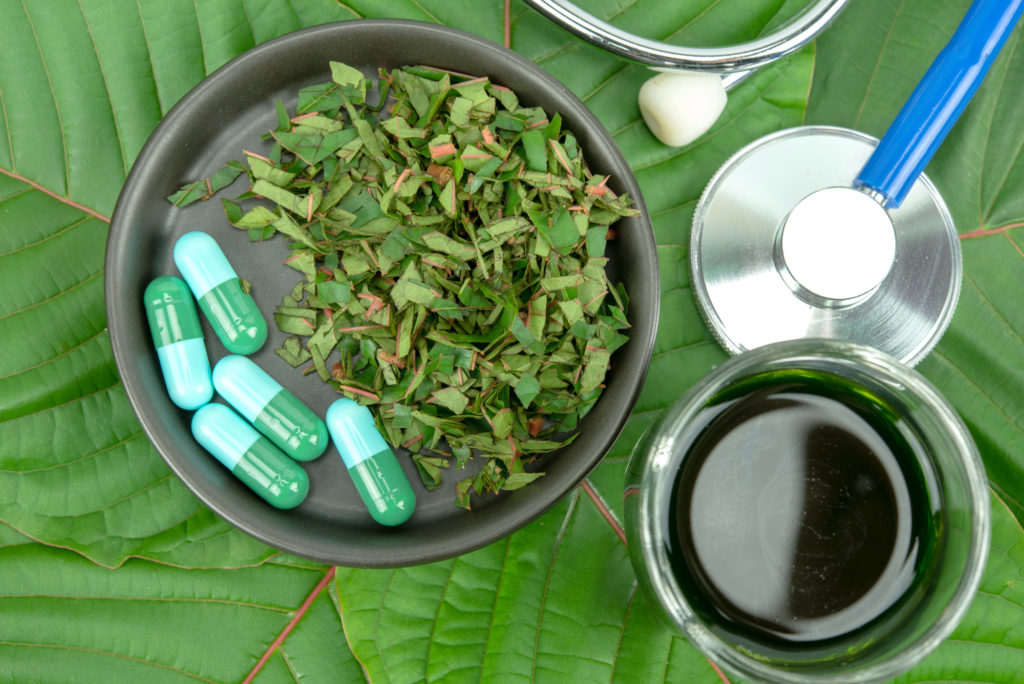
Are you curious about kratom tea? Do you want to learn more about what it is and what it does? In this guide, we’ll discuss all the important things you need to know about kratom tea.
You may be curious about what makes kratom tea so popular. One of these reasons is because it works like coffee. Around 64% of Americans drink a cup of coffee daily in the US.
The rest may not prefer coffee, but tea instead. Kratom tea is a popular alternative to coffee for its energy-boosting effects. We’ll also include some discussion on the FDA and DEA’s issue with kratom tea below.
Keep reading to learn more about kratom tea and the other ways that it affects those who drink it.
1. What Is Kratom?
Kratom comes from the Mitragyna speciosa tree. Many people refer to kratom as kratum, ketum, biak-biak, thang, thom, kakum, and Maeng Da. It is native to parts of Southeast Asia, like Malaysia, Thailand, and the Philippines.
Kratom trees grow well in the conditions in tropical regions. They can grow tall, up to 50 feet in height. If the conditions are perfect, you may even see a kratom tree grow up to 80 feet.
In many of these countries, workers in the fields chewed on kratom leaves. It was a traditional pick-me-up for them since it increased their energy and endurance. They also claim that chewing on kratom leaves helped with heat tolerance and relieving fatigue.
They also used other ways of ingesting kratom leaves. Some smoked crushed kratom leaves. Others crushed it as well and then brewed it into tea.
Also, they saw kratom as an herbal remedy for treating various illnesses. It treated coughing, high blood pressure, diabetes, and diarrhea. Many also used it as a pain reliever like opium or as a way to cope with opiate withdrawal.
Today, the popular way of ingesting kratom is by creating tea out of it. We brew the leaves of the kratom tea. Then, we drink it as a stimulant, traditional medicine, or pain reliever.
2. Effects of Kratom
Kratom has over 40 active compounds, but the main ones aren’t as well-researched as THC and CBD yet. Its two active alkaloid compounds are mitragynine and 7-Hydroxymitragynine. These compounds cause stimulating and pain-relieving effects on the receptors in the brain.
Kratom leaves from different parts of Southeast Asia have different levels of mitragynine. The alkaloid concentration in a leaf may also vary from how it got harvested. This is one reason why you’ll find various kratom strains in the market.
Depending on the dosage, kratom may act more like a stimulant, opioid pain reliever, or other. For example, in small dosages, kratom acts more like a stimulant. When you ingest doses between 1 and 5 grams, you’ll feel more alert.
Higher doses cause effects closer to opioid pain relievers, like morphine or codeine. Take 5-15 grams and you’ll feel tired, calm, and/or euphoric. Some take higher doses of kratom to deal with opioid withdrawal symptoms.
They also use kratom in higher doses to treat conditions like cough and diarrhea. If you take a dose higher than 15 grams, the sedative effect of kratom is more powerful. You may lose consciousness.
Benefits of Drinking Kratom Tea
As we already mentioned above, people drink kratom tea for various reasons. Other uses for kratom tea or kratom supplements include:
- Pain relief
- Extra energy
- Enhanced focus
- Mood-boosting effects
- Help with sleeping
- Relief from chronic illnesses
- Better relaxation
These are the typical effects people feel when they take kratom.
About 6 in 10 adults in the US have a chronic disease, and 4 in 10 have two or more. Sometimes, to help curb the symptoms and the severity of their diseases, they take kratom. Yet, remember that you also need a change in lifestyle and habits to make a significant change.
Studies also found that kratom, unlike morphine, doesn’t have harmful side effects. More on that in the next segment, so keep reading.
3. Does Drinking Kratom Tea Have Risks or Side Effects?
Before we discuss the effects of kratom, let’s take a look at morphine first. Did you know that morphine is a synthetic compound derived from kratom? As you may already know, morphine has harmful side effects like respiratory depression, constipation, and dependence.
A study found that kratom doesn’t have these effects on a person. The same study claims that kratom doesn’t cause respiratory depression or slowed breathing. Thus, further study on it to harness its compounds for medical benefits may be less addictive.
Still, this doesn’t remove the fact that kratom is addictive. You can develop symptoms of addiction if you consume kratom often. If you stop or are unable to consume kratom, you may develop withdrawal symptoms as well.
4. Kratom Strains and Colors
When you go shopping or kratom, you may find that there is a large variety to choose from. The various kratom strains and colors define a kratom based on where it got harvested. We’ll explain that in a minute.
As you may remember, kratom contains two active alkaloids. Also, the alkaloid content in kratom varies depending on where it came from. This alkaloid content defines a kratom strain.
Most strains use the name of the country from which they got harvested. That’s why you’ll find strains called Malay Kratom, Bali Kratom, and Maeng Da Kratom (from Thailand). However, certain strains don’t always come from the locations they’re named after.
Some Southeast Asian countries have bans on kratom exportation.
Why do some strains carry a region’s name if it’s illegal to export kratom from them? Well, characteristics of kratom leaves from certain regions got discovered before those bans. Even after the bans got declared, some strains keep the name of a region because of their link to it.
Another reason for the use of locations as strain names is easier identification. As the kratom industry grew, vendors needed a way to discern the strains they’re selling. Naming the strains was more about consistent labeling and less about representation.
Kratom Colors
The popular color of kratom powder for tea is green. You’ll also find that there are some kratom strains in different colors. You’ll find other colors of kratom like red, white, and yellow.
Kratom leaves often have red, white, or green veins. Yellow kratom is a mixture of leaf types. No natural kratom leaf has yellow veins.
Some say that kratom colors have different effects on the brain. This is true to an extent. Kratom leaves have different-colored veins because of the location and environment they grew in. Thus, a green kratom strain won’t have the same alkaloid content as a white kratom strain.
Now, you know how to identify kratom strains from their names. You can take a closer look at Green Bali Kratom as an example. You can say it likely came from green-veined kratom leaves from Bali, Indonesia.
5. How to Prepare Kratom Tea
Now, let’s talk about the best way to prepare kratom tea. Before we get into the steps, know that you should only use powdered kratom leaf or tea leaves for tea. You mustn’t use extracts or other forms of kratom for making kratom tea.
Another thing to note is to avoid letting your kratom roll in a boil with the water. This way, you can keep as much of the natural alkaloid content of your strain. Also, like any other tea, the longer you let it steep, the stronger the flavor and effect.
Boiling a Pot
Take a medium or large pot and place 1 liter inside it to boil. Once the water comes to a gentle boil, lower the heat, and then add the kratom. Let it simmer for 10-20 minutes.
Next, take a mesh strainer or cheesecloth to strain the kratom leaves. If you used powdered kratom, wait for the powder to settle at the bottom of the pot. You can also reuse the leaves for one or two more batches if the first steeping didn’t take too long.
Using a Teapot
If you have a teapot, you’ll need a tea bag or ball for your kratom. If you’re using a ball, pick kratom powder. If you’re using a teabag, use kratom leaves.
You can place the teabag in the pot. However, you need to keep a close eye on it to prevent damage. If you don’t have the time to wait and watch your teapot, let the water cool for at least one minute. Afterward, pour the water over into your mug or thermos and let it steep.
Enjoying Sun Tea
You don’t always need to use warmth to bring out the effects of the leaves. Preparing kratom sun tea will let you make kratom tea in large quantities. You can also drink kratom tea in cool or room-temperature water with this method.
Fill a jug with water that’s either cool or room-temperature. Next, infuse the water with kratom. You can choose to let the leaves/powder swim in the water or use a teabag. For a gallon of water, it’s best to use 7-10 teabags per your preferences.
Let the jug sit under the sun for 1-5 hours. After that m there, place your tea in the fridge for better preservation.
6. Storing Kratom
Stale kratom leaf powder can leave a bad taste in your mouth and mood. To prevent degradation and staleness of your kratom, you need to store it right. The best way to do this is to store your kratom in a cool environment that’s free of humidity, UV light, and oxygen.
Place the kratom in small plastic bags. You want to divide your kratom into one-day or two-day supplies. This way, the entire batch doesn’t have risks of getting stale or exposed to the elements.
Next, you want to vacuum seal the bags. If you don’t have a vacuum sealing device, place a straw at the corner and suck the air out. Don’t forget to zip the rest of the bag close before you do this.
If you have a tin or opaque plastic container, place the small bags inside it. This will help keep the kratom from getting stale. You can also add lemon to reduce the bitter taste natural to kratom.
7. Other Ways of Ingesting Kratom
In many parts of the world, tea is the most popular drink. In the US, tea comes second to coffee, an American favorite. If you aren’t a fan of drinking tea, there are other ways to consume kratom.
Some people prefer kratom in a pill. They buy kratom capsules and tablets. Others mix kratom with food while others use the “toss and watch” method. This is the method of spooning powder into a person’s mouth and then washing it down with water.
However, drinking kratom tea is the most effective way of consuming kratom.
8. The Issue With Kratom
The Drug Enforcement Administration’s issue with Katom came out in 2016. The DEA wanted to ban its sale, saying it was an imminent hazard to public safety. Earlier in that year, the DEA labeled kratom as a Schedule 1 drug, which is like LSD, marijuana, and heroin.
Some members of Congress managed to convince the DEA to delay the ban. Instead, the DEA established public comment. The responses from the public were challenges on the scheduling action and urge to consider the public comments.
The FDA also sees that kratom has a high potential for abuse. It is why the agency is very watchful and careful with those who often consume kratom. In that same year when the DEA proposed a ban on kratom, many people protested and began buying supplies to last.
Try a Cup of Kratom Tea Now
Kratom is helpful and beneficial if you take it in moderation. If you want to experience its effects, why not try kratom tea? It’ll help relax and de-stress you from the taxing issues and current events.
That’s it for our guide on everything you need to know about kratom tea. We hope that this guide helped you educate yourself on kratom and why it’s so popular. We hope you learned something new about kratom.
Did you enjoy learning all these things about kratom tea? Do you want to see more content like hits? Feel free to check out our other guides for more useful information on kratom right here!
You May Like These Articles As Well:
Forget the Meds: 9 Natural Stress Remedies to Curb Anxiety
CBD Buying Guide: How to Ensure the Quality Of Cheap CBD Oil








